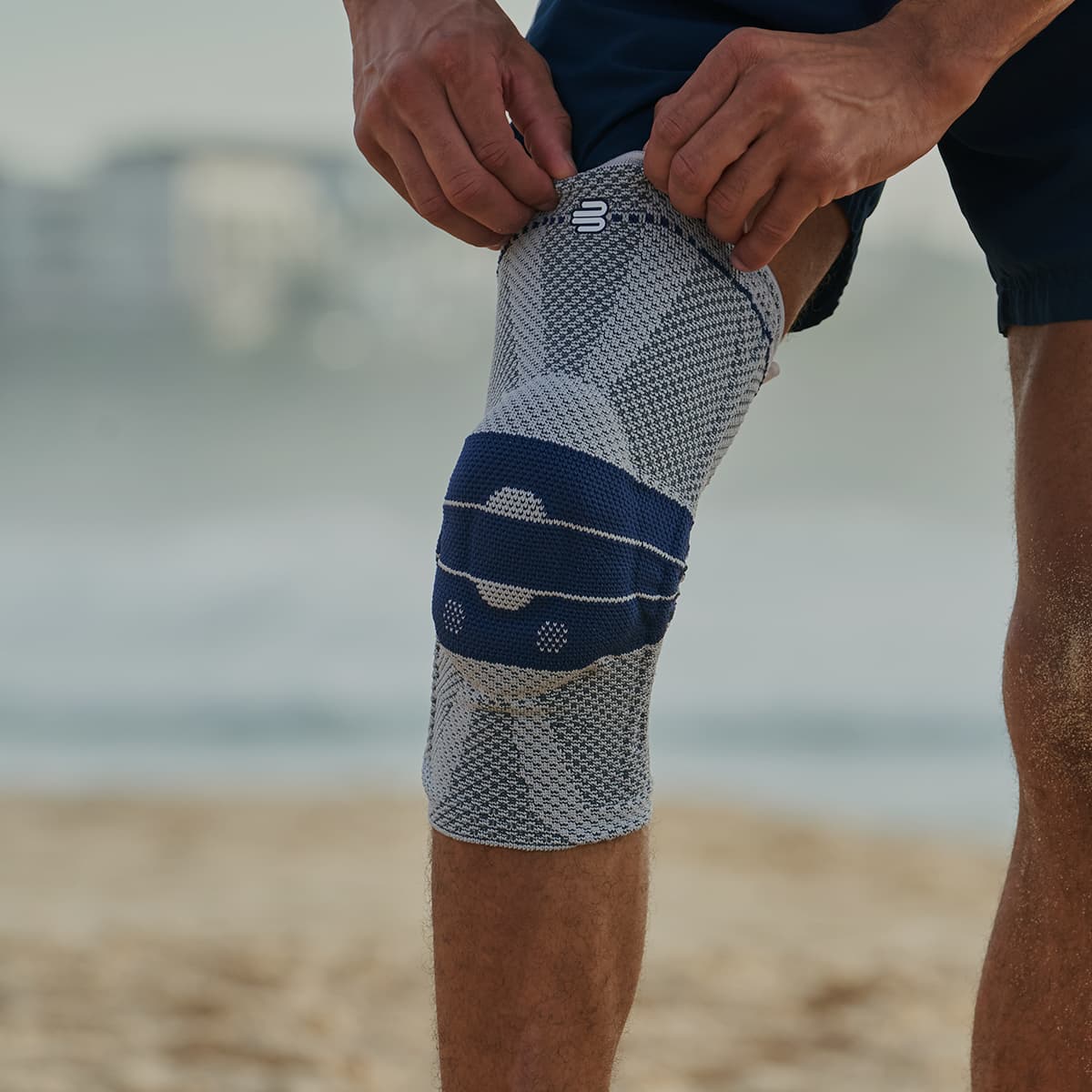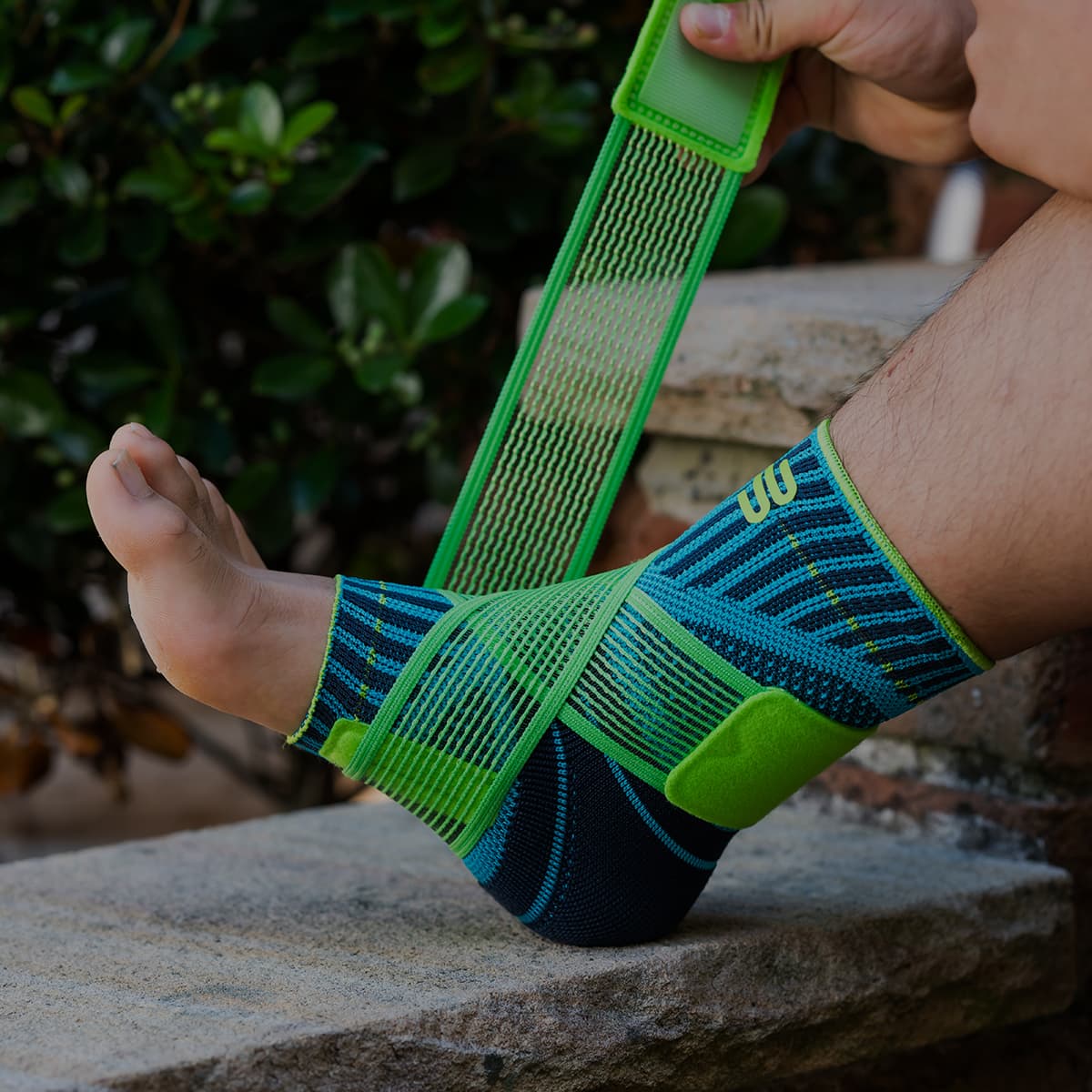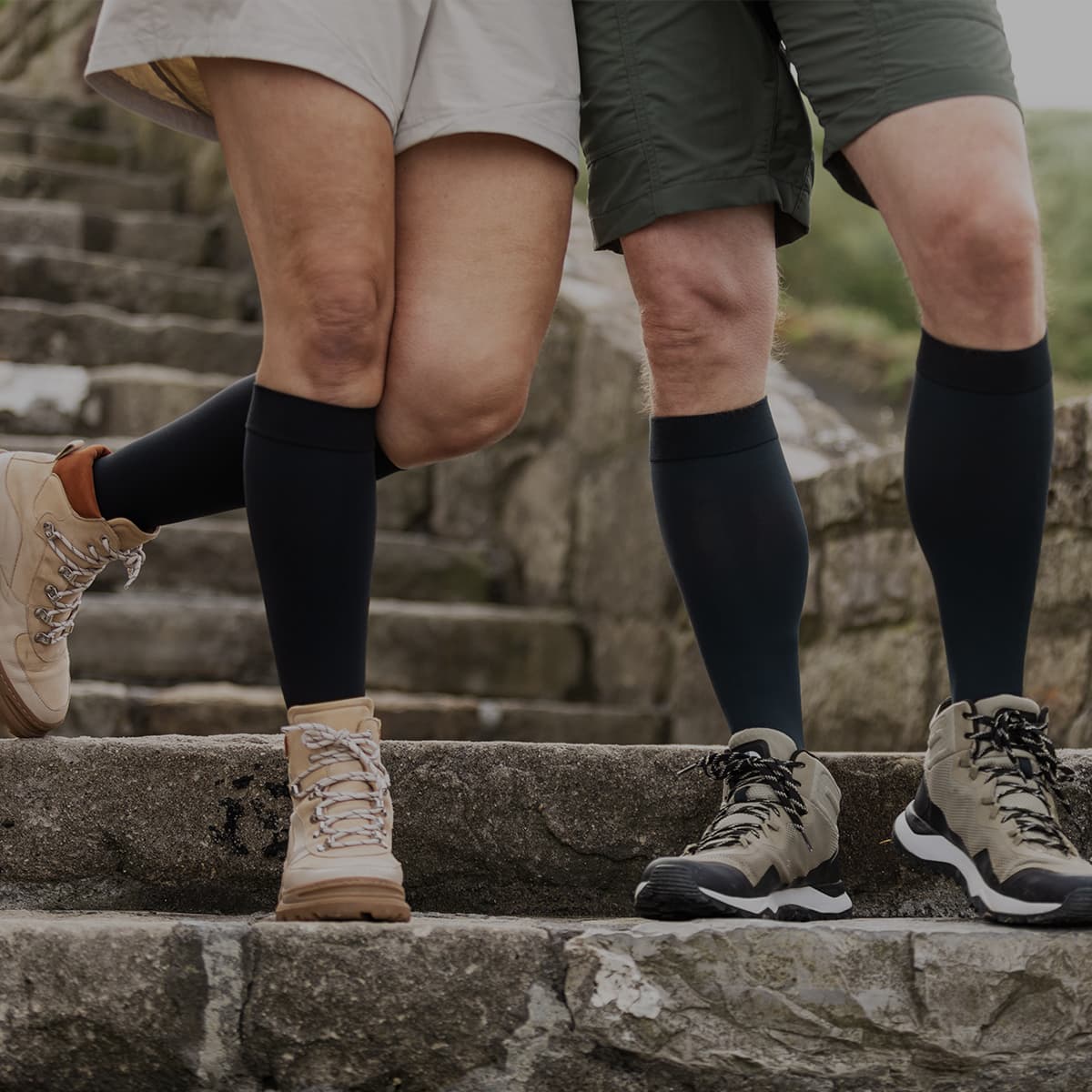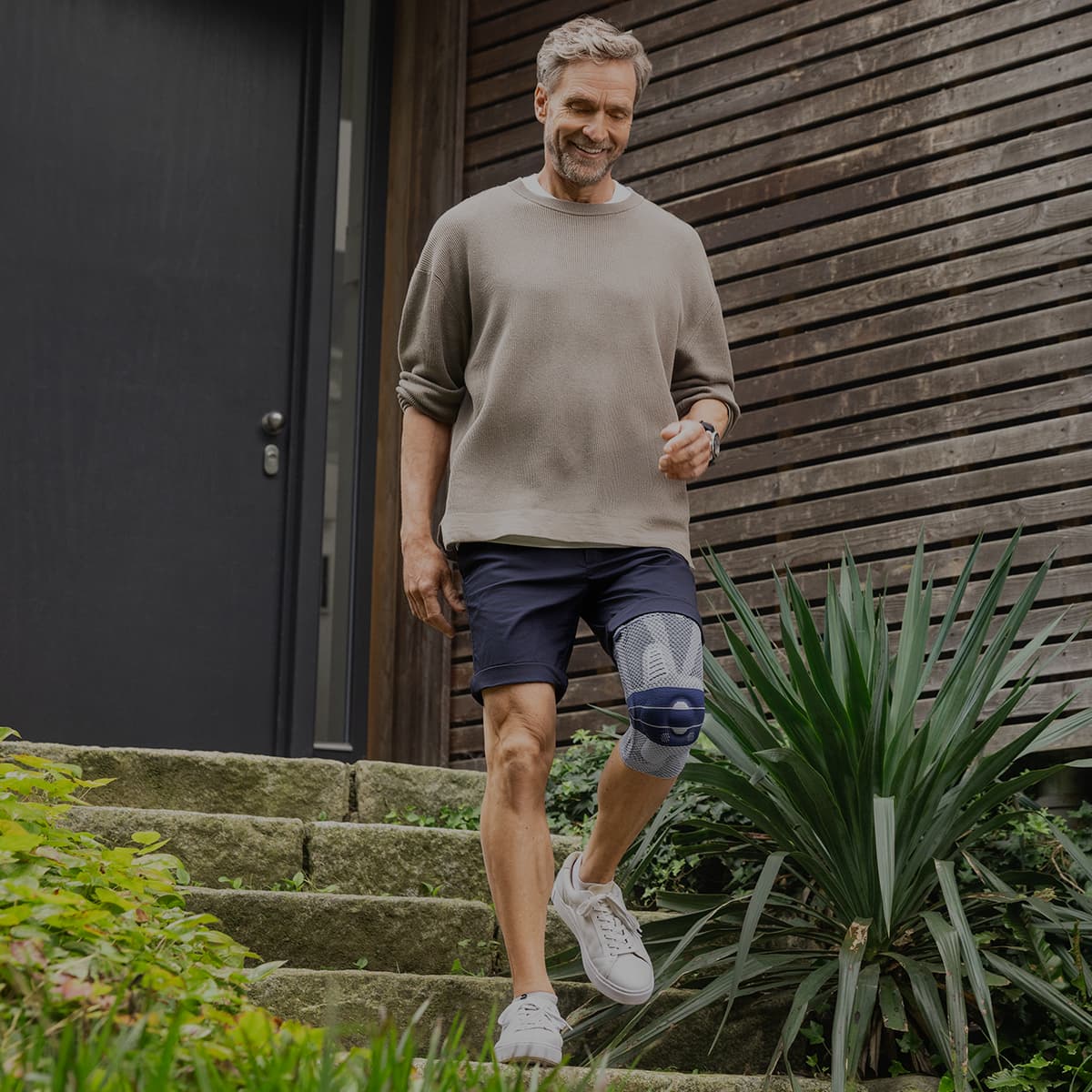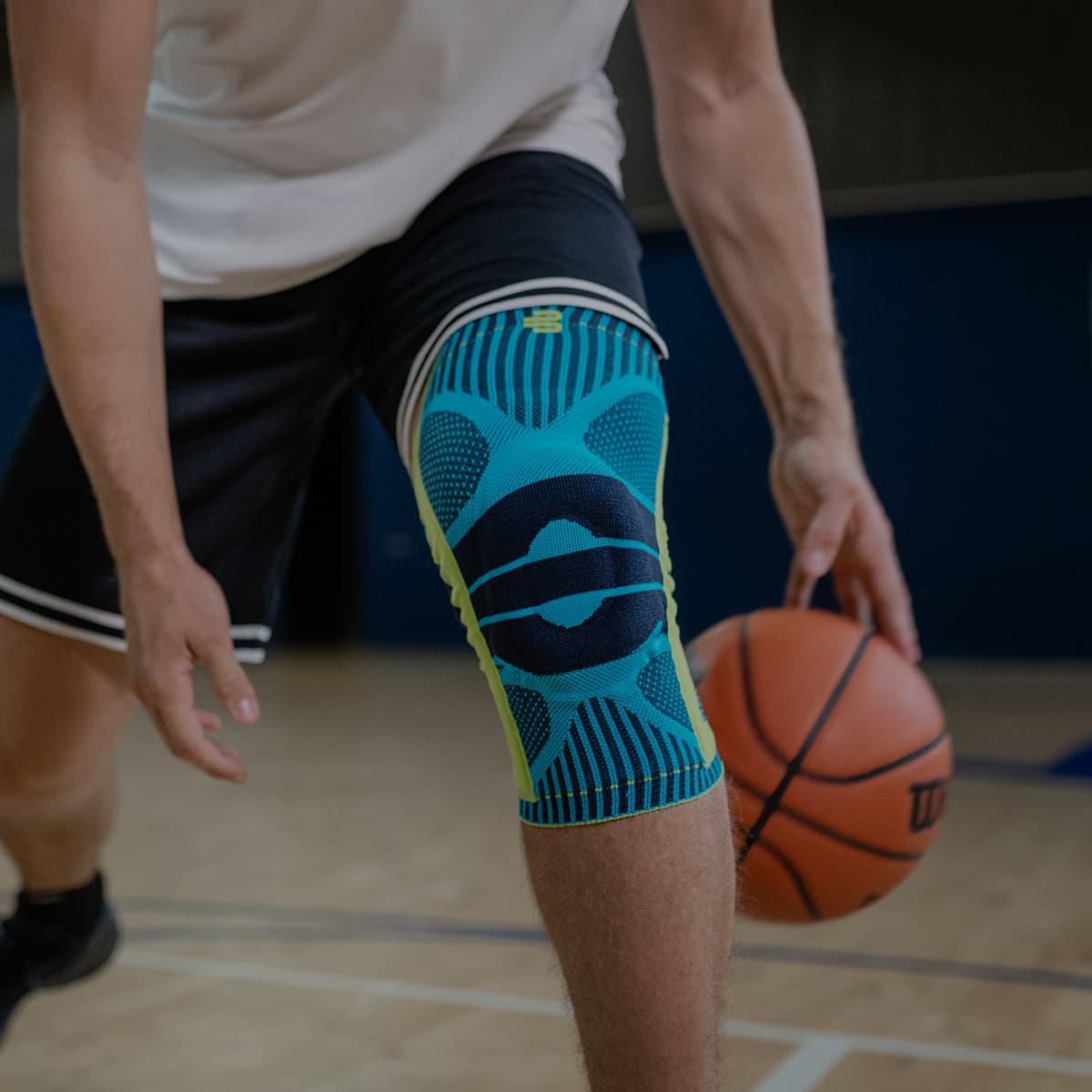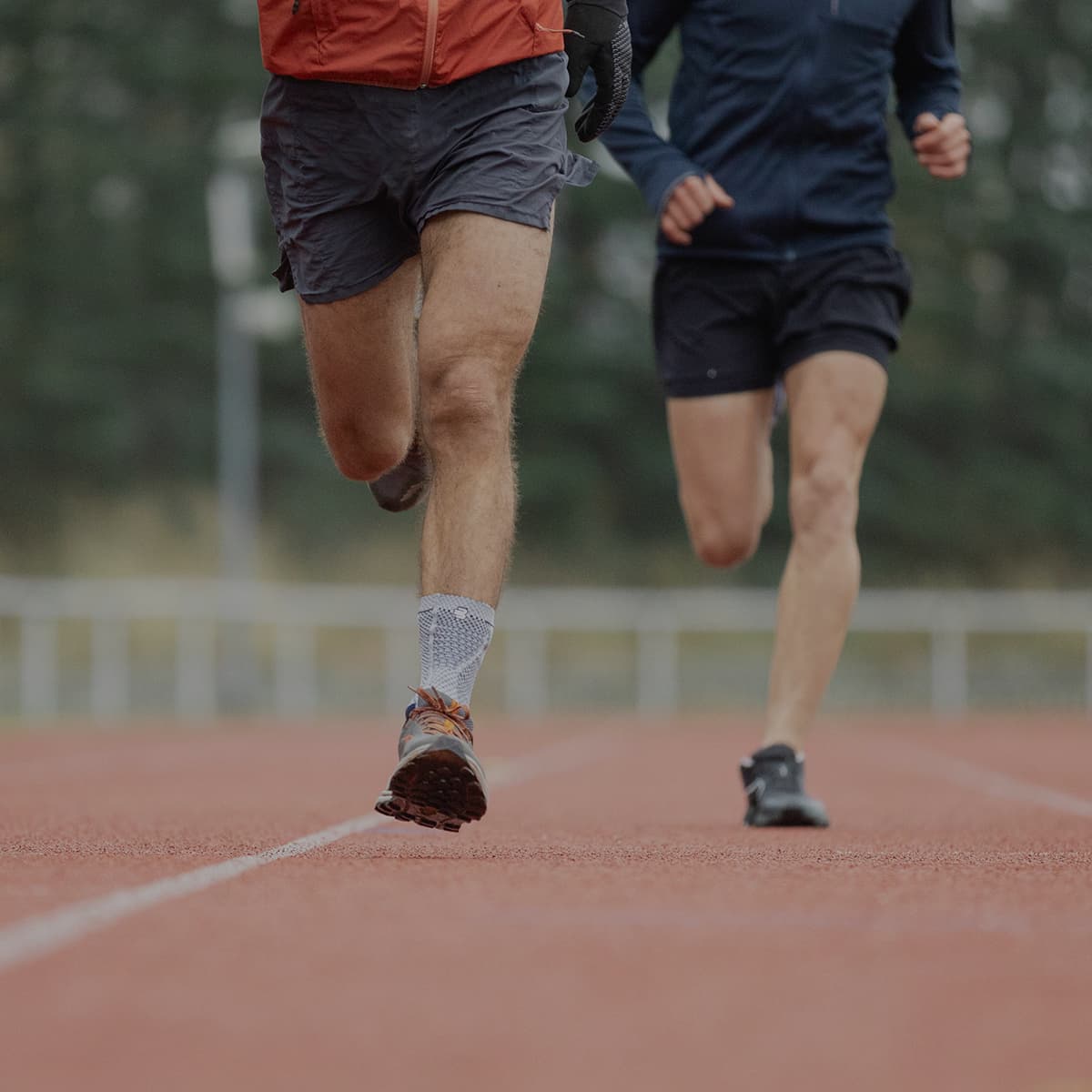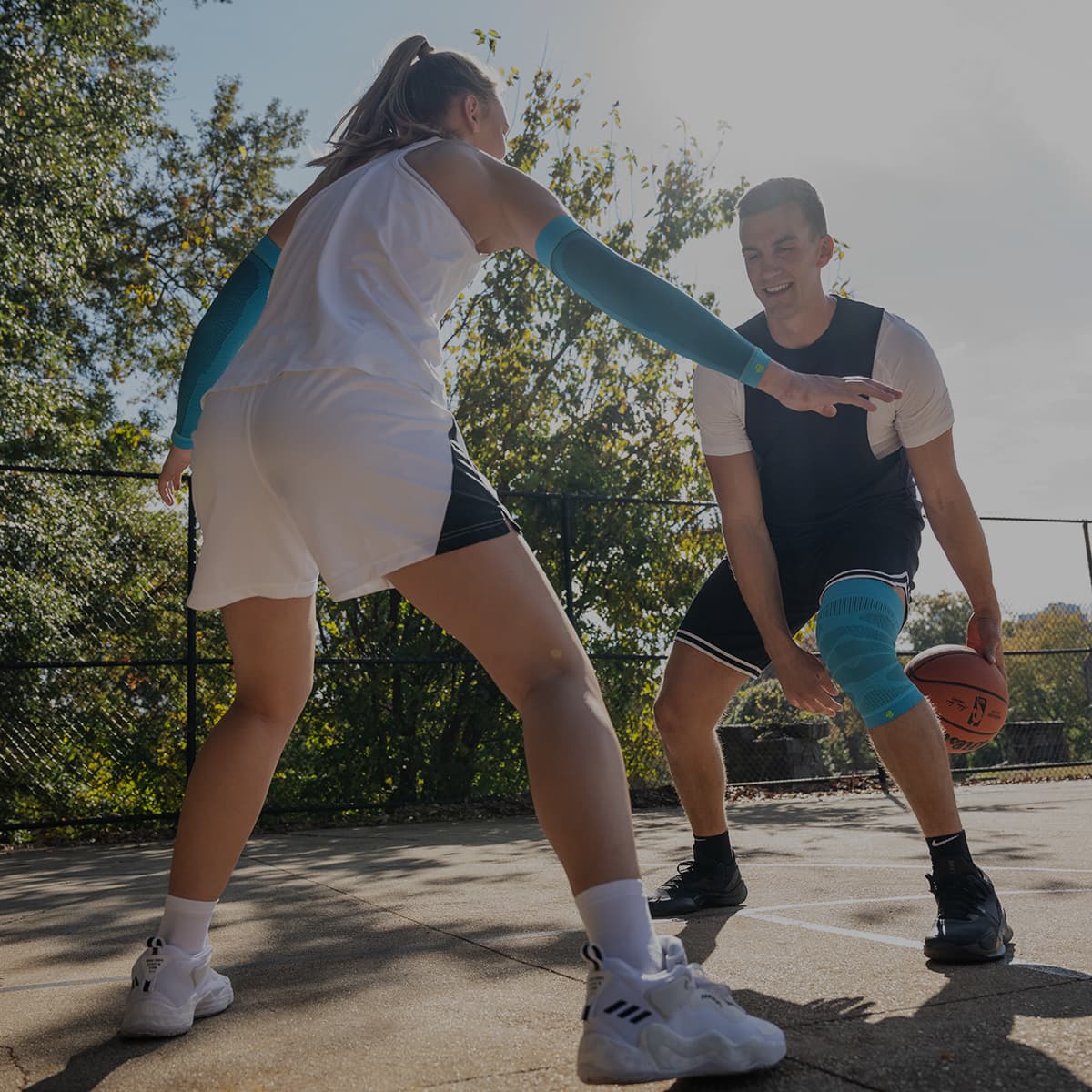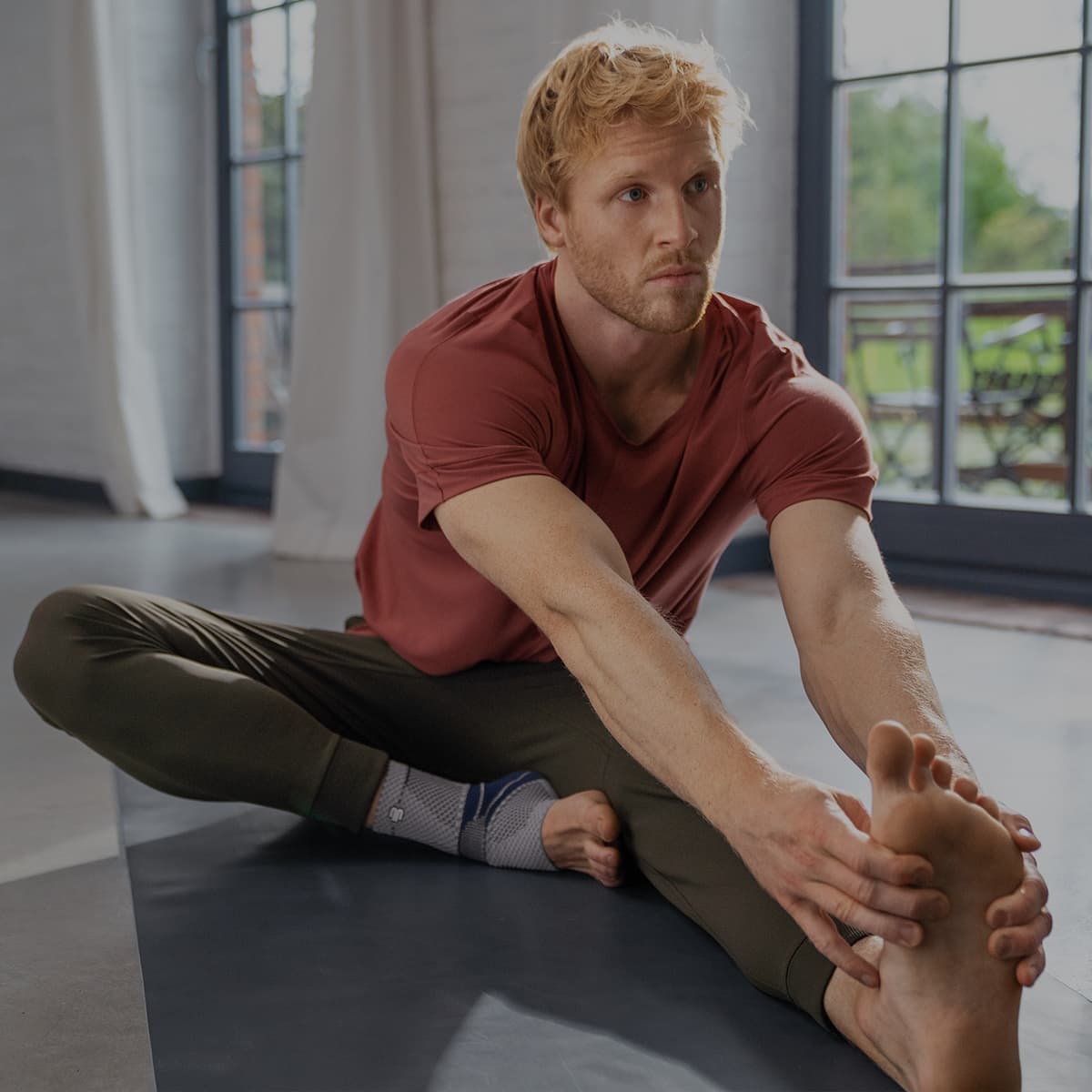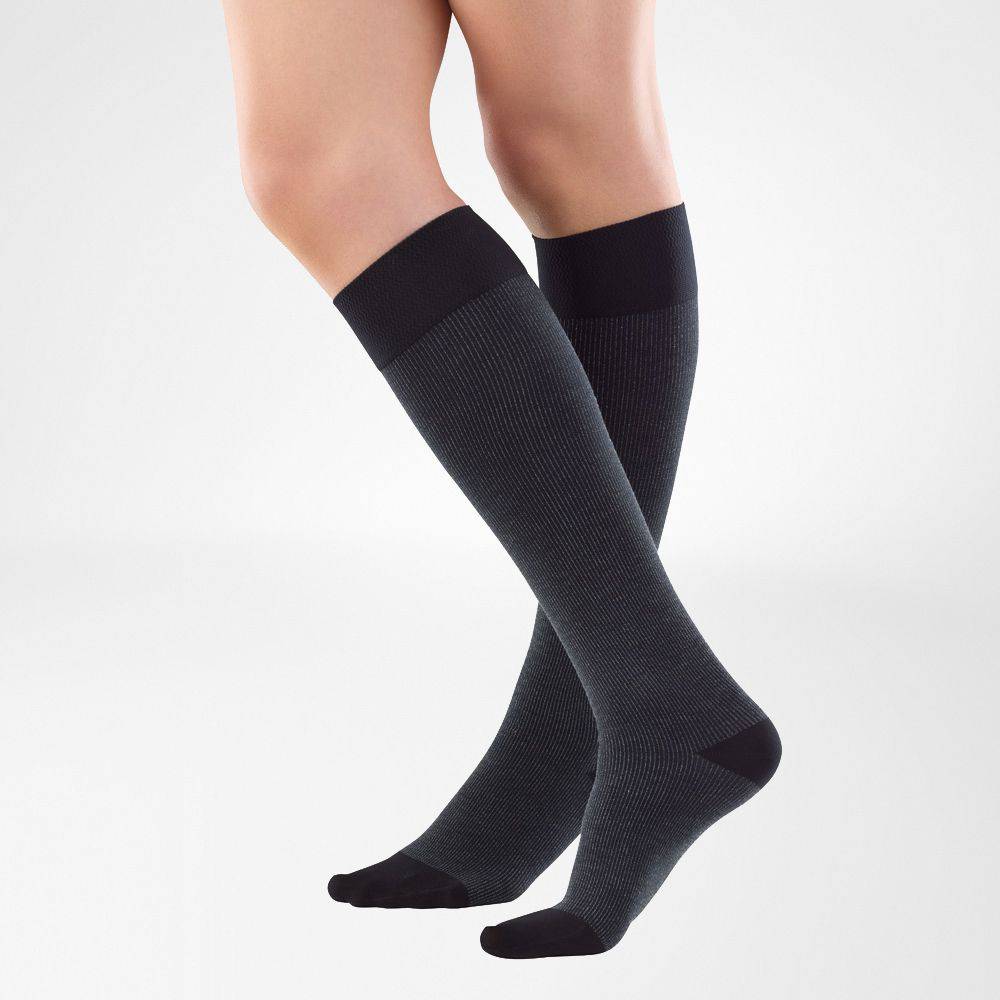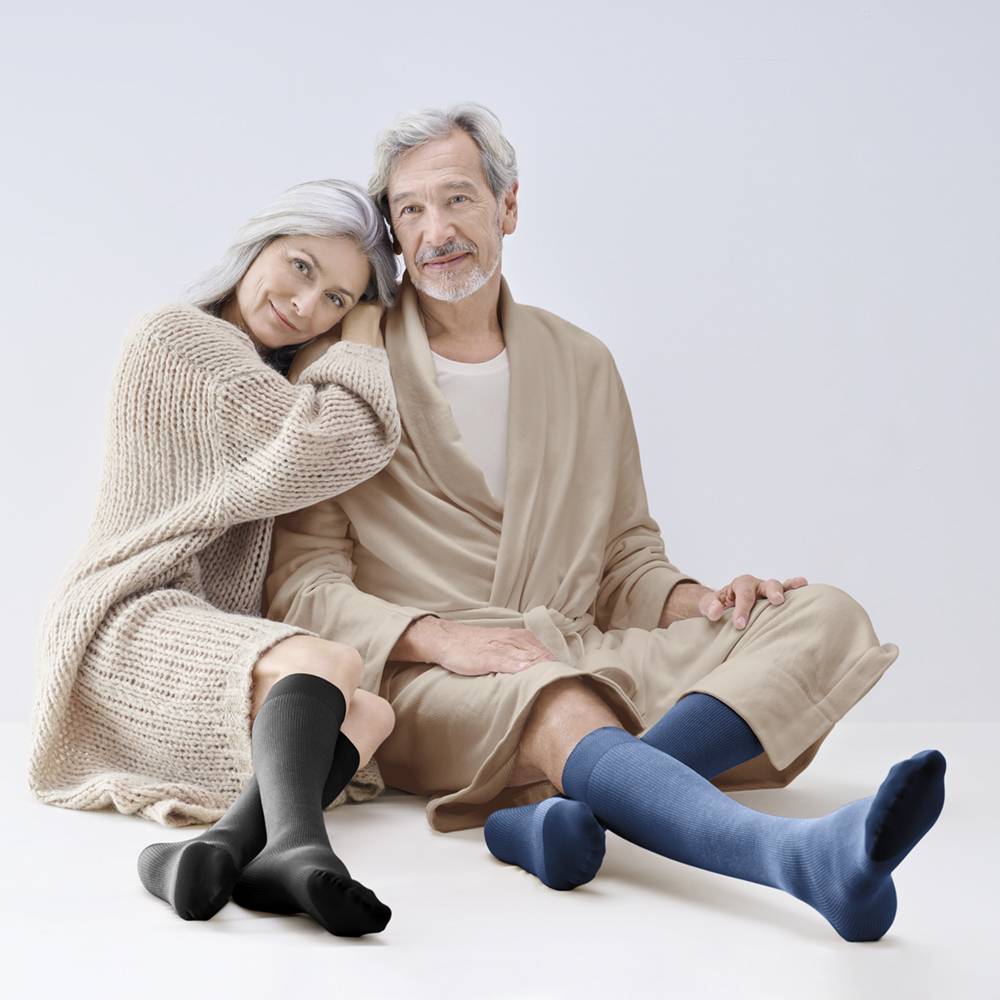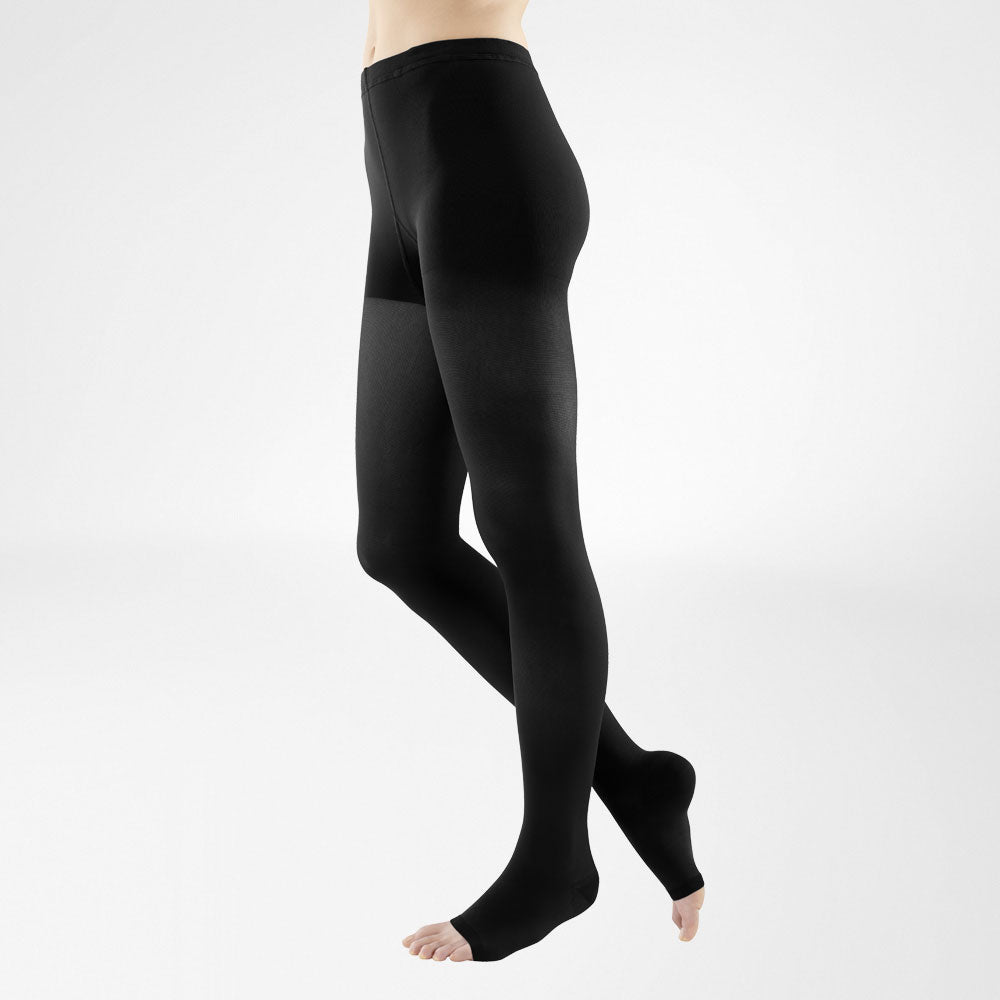Compression socks offer a lot of benefits. These include preventing Deep Vein Thrombosis, reducing that heavy, tired feeling after a long day on your feet, and helping patients recover after varicose vein treatment. However, while compression can be beneficial, it can also cause unwelcome side effects. So, to help you get the most out of your garments, here’s how to wear compression socks safely.
1. Get a compression grade suited for you
Compression socks come in 4 classes: mild, moderate, strong, and very strong. Medical compression standards differ from country to country. As Bauerfeind compression socks are manufactured in Germany, we follow the below standards:
|
I |
Mild |
18 – 21 mmHg |
2.39 – 2.79 kPa |
|
II |
Moderate |
23 – 32 mmHg |
3.06 – 4.26 kPa |
|
III |
Strong |
34 – 46 mmHg |
4.53 – 6.13 kPa |
|
IV |
Very Strong |
> 49 mmHg |
> 6.53 kPa |
Mild or class 1 stockings are best for supporting healthy vein function. You can wear them when travelling or sitting for long hours at the office. This is also the class recommended for people with diabetes and those who’ve just undergone varicose vein treatment.
Moderate (Class 2) stockings are best for managing certain cardiovascular conditions. These include varicose veins, hypotension, deep vein thrombosis, post-thrombolitic syndrome, and healed venous ulcers. They’re also sometimes prescribed for mild oedema.
Strong compression socks (Class 3) are used for moderate oedema and lymphoedema. These stockings typically can’t be purchased over-the-counter, requiring a prescription.
Very strong (Class 4) socks are used for the most severe forms of the above conditions.
2. Make sure to get them properly fitted
Compression socks have to fit just right to work! Too tight and they can restrict circulation, too loose and they won’t have much of an effect. Additionally, you don’t want your compression socks too long or too short - the former can cause wrinkles to form in the fabric, while the latter may not have the desired effect where you need it or may be uncomfortable to wear.
3. Check for signs of redness, bruising, or irritation
Well-fitted, high-quality stockings are highly unlikely to cause skin issues. However, there is still a possibility, especially if you have a compromised or sensitive skin layer. So, check for skin changes once you take your stockings off. If you do get them, see your clinician to determine if you have an allergy to the fabric, if the stockings are too tight, or if compression may not gel with your skin condition.
4. Hand wash them regularly
Compression socks are like regular socks. After a while, sweat and bacteria will build in the fabric, causing a stink and potentially uncomfortable wear. So, hand wash them often - preferably after every 1 or 2 wears - in cool water and a bit of detergent.
You CAN machine wash a compression sock. Just be sure the settings will be gentle on the fabric. Keep it at 30 degrees or less, use a tiny bit of detergent, and select a delicates setting. We’d also recommend using a wash bag for extra protection.
You should also note that compression socks need to be air-dried. Don’t put them on a heater, don’t attempt to dry them with a fan, and keep them out of direct sunlight. We know waiting for them to dry in the shade can be a hassle, but it will help the fabric last longer.
5. Don’t use compression alone

Even though compression significantly reduces the likelihood of getting a blood clot or vein disorder (and can reduce the symptoms of varicose veins, oedema, and lymphedema), you should still take other measures.
These include exercising regularly, drinking enough water, eating a diet rich in vitamins and nutrients (B vitamins, Vitamins C, E and D, collagen, and magnesium are particularly important) and avoiding long periods of uninterrupted standing or sitting. You should also keep your doctor in the loop about any changes.
To sum up
Compression socks can help manage and even prevent a number of conditions, including oedema, DVT, varicose veins, and lymphedema, by boosting circulation, reducing fluid retention, and assisting muscle function.

